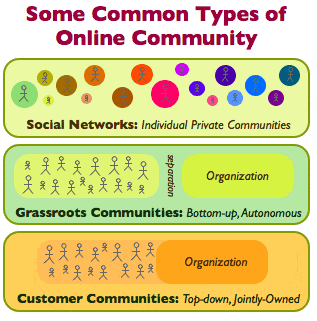Online customer communities are great ways to boost customer retention and move from retention to customer loyalty or even advocacy. Customer retention is one of those business issues that generally don’t get attention until a crisis occurs. That is, the customers actually begin to leave. At this point, executive focus turns almost exclusively to the problem at hand.
However, organizations need not wait until customers are jumping ship. Once this occurs, companies often find themselves scrambling in search of ways to retain those customers. Online customer communities are key to retaining customers, and strategies can be put in place well before a crisis has materialized. Socious has six great tips at their blog.
1. The ‘conditio sine qua non’ of online communities and customer retention: listening.
Everyone wants to feel they are listened to; sometimes this is all that people really want. But an organization can go a step beyond and demonstrate that they are listening and taking on board the concerns of customers.
This should be a two-way communication in which customers know they are not only heard but that the company is responding. A great way to approach this is to see it an opportunity. Customers can be educated as to how products and services work and better ways to access their features as well as how the organization chooses those features for the customer.
2. Don’t just respond, use online customer communities to be proactive.
A reactive response means the organization is waiting around for something to go seriously wrong before the problem is addressed.
With a proactive philosophy, problems can be identified and addressed before they have time to fester and grow into something truly damaging for an organization. Identifying customers who seem unhappy and likely to turn to a competitor early on means that customer’s concerns can be addressed efficiently and effectively.
3. Remain close to your customers.
Stay close to your customers. In the end, that’s what online customer communities are all about.
Leveling the playing field between customer and organization increases a sense of loyalty and partnership. By encouraging customers to participate, whether through blogging, participation in a forum, involvement in an event or something more, organizations allow customers to feel as though they have a genuine relationship with the organization by using online customer communities. This sense of trust and belonging on the part of the customer will be invaluable for the organization.
4. Produce relevant content that is only available for customers.
Content is essential in many forms of community marketing. However, in online customer communities it’s even more important if you make it extremely valuable.
Simple content is not enough, in online customer communities it has to go a step further and help your customers succeed. This makes the organization and its online customer communities at least as valuable to the customer as the customer is to the organization. Multimedia can be used to keep content interesting and variable. Videos, blogs and instructional material drawn from customer feedback are all ways to provide critical information that customers can’t get elsewhere. Customers who become dependent upon a flow of excellent content are much less likely to move on to a competitor. A solid content marketing strategy around your customers is essential to succeed.
5. Make yourself and your online customer communities a vital part of the customer’s life.
Is the customer community doing what it needs to do for the customers?
The way to determine this is by asking the customers themselves. Based on customer response, the online community can be periodically revised to meet customer needs.
6. Aid the customer in becoming more successful.
Ultimately, this must always be the aim for an online customer community. The goals of the customers need to become a part of the organization.
The places where the customers are encountering challenges with the organization’s products and services are as important as the successes. Areas of struggle should be addressed and strategies put in place to assist customers in fixing those problems. Successes should be celebrated and organizations should work with customers to maximize those successes.
Online customer communities have to focus on the whole value chain of the customer, his customers and his partners. It’s about what the customer wants YOU to know. Don’t settle for average and go for unconditional customer-centricity in all aspects: the features of your online customer communities, content, listening and response plans, proactive community management and of course the service you provide.
Also read these twelve best practices for online customer communities by Dion Hinchcliffe, Executive VP of Dachis Group. They date from 2008 but are still very useful.


